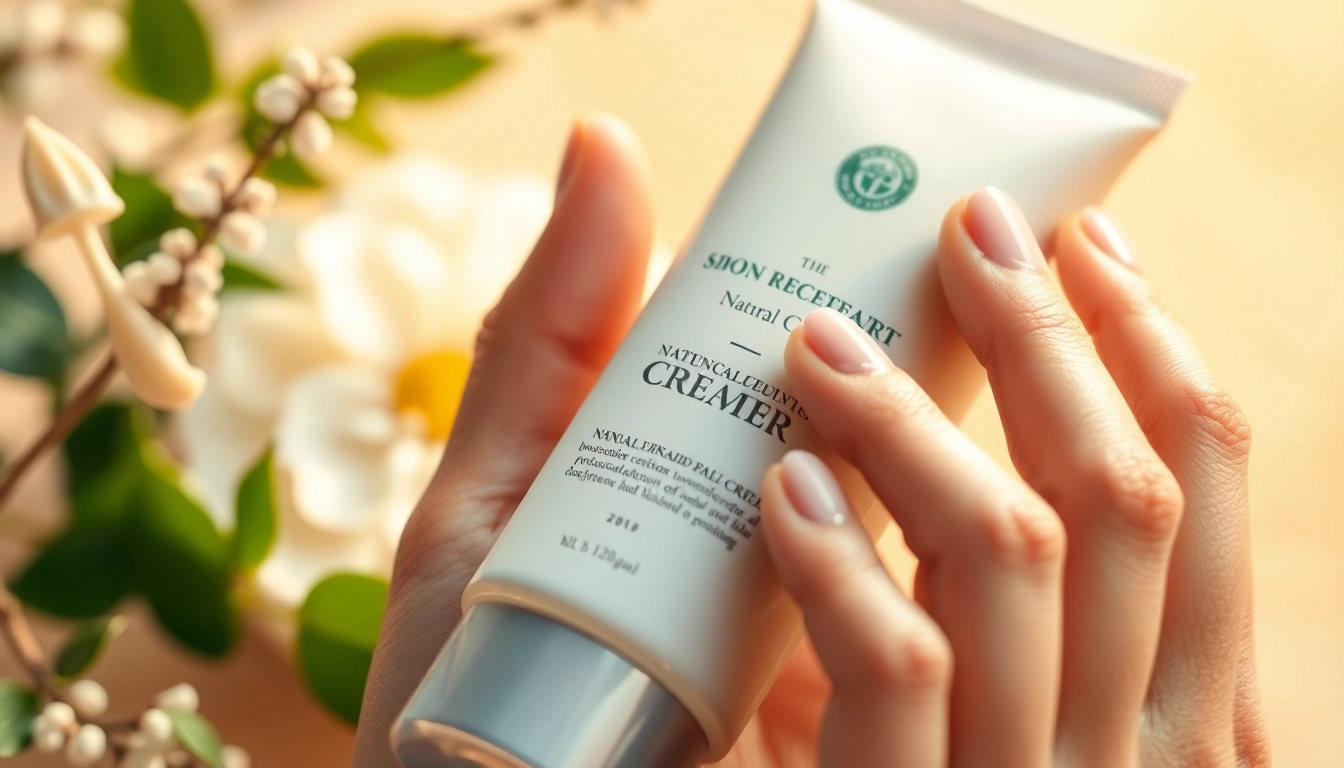Understanding Hand Creams: Ingredients and Benefits
Hand creams are essential products that play a pivotal role in skincare, particularly for those exposed to harsh environmental elements. Understanding what constitutes effective hand cream is vital for both consumers looking for quality products and suppliers aiming to meet market demands. This section delves into the various hand cream Supplier offerings, particularly regarding their ingredients, types, and health benefits.
Types of Hand Creams
Hand creams come in various formulations designed for different skin types and conditions. Here are some commonly found types:
- Moisturizing Hand Creams: These are enriched with hydrating ingredients like glycerin, shea butter, or aloe vera, targeting dry and cracked skin.
- Therapeutic Hand Creams: Often formulated for very dry skin, these creams include ingredients such as urea or lanolin to deeply nourish and heal.
- Protective Hand Creams: These create a barrier against environmental stressors and are suitable for outdoor workers. Ingredients may include beeswax or silicone.
- Luxurious Hand Creams: Aimed at providing a pampering experience, these are often infused with essential oils, premium extracts, and botanical ingredients.
Key Ingredients to Look For
When selecting a hand cream, it’s crucial to consider the following key ingredients:
- Shea Butter: Renowned for its moisturizing properties, it nourishes and softens the skin.
- Aloe Vera: Known for its soothing and healing properties, aloe vera prevents dehydration and irritation.
- Glycerin: A powerful humectant that attracts moisture to the skin, improving hydration levels.
- Vitamin E: An antioxidant that protects skin from environmental damage and promotes healing.
- Essential Oils: These not only provide fragrance but often contribute additional skin benefits, such as calming effects (e.g., lavender oil).
Benefits for Skin Health
The benefits of regularly using hand creams extend beyond mere aesthetics. Here are some significant health advantages:
- Hydration: Regular application of hand cream can prevent the skin from becoming dry and flaky.
- Repair: Hand creams help in healing and repairing damaged skin, especially after exposure to irritants.
- Protection: They form a barrier against harmful elements, reducing the risk of skin conditions.
- Anti-Aging: Ingredients like retinol and peptides in certain formulations can improve skin elasticity, potentially reducing the appearance of fine lines.
Finding the Right Hand Cream Supplier
Identifying a quality hand cream supplier is essential for retailers and businesses wanting to provide effective skincare solutions. Here’s what to consider when making your choice.
Evaluating Quality and Variety
When looking for a hand cream supplier, assess the quality and the range of products they offer. Suppliers should provide various formulations, such as moisturizing, therapeutic, and organic options. Additionally, it’s essential to check if the ingredients are sourced responsibly, and products are compliant with safety regulations.
Flexible suppliers should also cater to custom formulations, allowing businesses to differentiate their offerings. A good mix of bases and ready-to-sell products can also boost inventory variety.
Assessing Supplier Reputation
Research potential suppliers thoroughly. Look for customer reviews, testimonials, and case studies to gauge reliability and product effectiveness. A reputable supplier should have a track record of consistent quality and reliable delivery times. Networking with other businesses or industry connections can also provide insights into supplier performance.
Cost Considerations for Wholesale Purchases
Cost is a significant factor when selecting a supplier. While you want to ensure quality, balance between cost and benefits is crucial. Consider suppliers who offer volume discounts and competitive pricing without compromising quality. Always compare quotes and terms from multiple suppliers to find the best deal.
Also, be cautious of suppliers offering prices that seem too good to be true; they might be cut corners on quality which ultimately affects your brand’s reputation.
Customization Options with Your Hand Cream Supplier
Customization is a vital aspect that sets your brand apart. Here’s how a good hand cream supplier can assist with tailor-made products.
Fragrance and Texture Customization
Creating unique fragrances can enhance the allure of your hand creams. Working with a supplier that offers customization options for scents and textures allows you to appeal to the specific preferences of your target audience. For example, consider providing unscented options for individuals with sensitive skin or allergies.
Texture also matters. Depending on your market segment, you might want to offer fast-absorbing light formulas or rich creams for intense moisturizing. This flexibility enhances consumer satisfaction and loyalty.
Labeling and Branding Considerations
Your hand cream’s packaging should convey your brand’s story effectively. Collaborate with suppliers who provide label design and branding options. Consistency in your branding can enhance visibility and recognition in a crowded market. Custom labeling should include essential information such as ingredients, benefits, and usage instructions in a visually appealing way.
Meeting Market Trends with Custom Formulas
Today’s consumers are increasingly aware of ingredients and are often seeking products that are organic or cruelty-free. Suppliers can help you create custom formulations that align with current trends, including vegan, gluten-free, or sustainably sourced options. This attention to market trends can significantly increase your hand cream’s appeal and help you capture a broader audience.
Marketing Your Hand Cream Products Effectively
Once you’ve developed your hand cream product, a robust marketing strategy is crucial to its success in a competitive landscape. Below are some effective strategies to consider.
Developing a Unique Selling Proposition
A unique selling proposition (USP) defines what makes your hand cream stand out. Identify what benefits your product provides that others do not, whether it’s unique ingredients, specialized formulations, or sustainable packaging. Clearly communicating this USP across all marketing channels can increase customer interest and drive sales.
Utilizing Digital Marketing Strategies
In the digital age, having an online presence is essential. Developing a comprehensive digital marketing strategy should include:
- Social Media Marketing: Engage your audience through platforms like Instagram and Facebook, showcasing customer testimonials and product usage examples.
- Email Marketing: Retain customers and boost sales through email campaigns featuring product launches, promotions, and skincare tips.
- Search Engine Optimization (SEO): Optimize your website and online content to ensure that potential customers can find your hand creams easily through search engines.
Gathering and Leveraging Customer Feedback
Customer feedback is invaluable for continuous improvement. Use surveys, product reviews, and social media interactions to gauge user satisfaction. Implementing changes based on this feedback not only enhances the product but also builds trust and loyalty with your customers.
Measuring Success: Metrics for Hand Cream Products
Implementing effective metrics is essential for evaluating your hand cream product’s performance. Below are key performance indicators (KPIs) to consider.
Sales Performance Analysis
Analyzing sales figures provides insight into market demand and customer preferences. Track metrics such as total sales, average order value, and conversion rates. Seasonal fluctuations should also be considered, as hand cream demand may vary throughout the year.
Customer Satisfaction Metrics
Measuring customer satisfaction can involve monitoring return rates, customer complaints, and overall reviews. Metrics such as Net Promoter Score (NPS) can give a clear indication of overall customer satisfaction and their likelihood of recommending your products.
Adjusting Strategies Based on Data Insights
The beauty of having access to past performance data is the ability to adjust strategies for future success. Use analytical tools to draw insights from various metrics and adjust your marketing efforts, product offerings, or even pricing strategies accordingly. Staying agile and responsive to market feedback is key to long-term growth.



